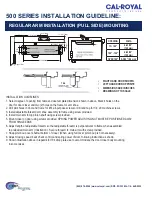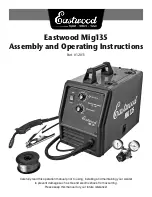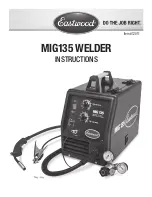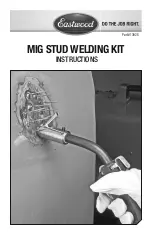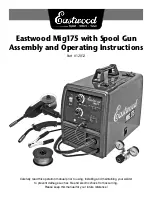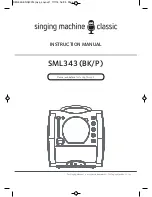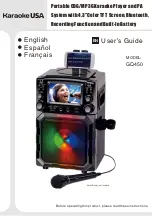
16
You can use the wire speed control to slightly
increase or decrease the heat and penetra-
tion for a given heat setting by selecting
higher or lower wire speed settings. Repeat
this tune-in procedure if you select a new
heat setting, a different diameter wire, or a
different type of welding wire.
LEARNING TO WELD
MIG (Metal Inert Gas) welding is the process
of uniting metallic parts by heating and allow-
ing the metals to flow together through the
use of an electrical arc. The electrical arc is
created between a continuous consumable
wire electrode (the welding wire) and the
work piece. An inert shielding gas is used to
protect the weld puddle from contamination
and enhance the welding capabilities of the
electrical arc.
Whether you have welded before or not, it is
important that you become familiar with your
new welder, its controls, and the results
achieved at different settings. We strongly rec-
ommend that you practice with your new
welder on scrap metal trying different heat
settings, base metal thicknesses, and welding
positions for each type and size of wire you
will be using. By doing this you will gain a feel
for how changes in these welding variables
affect the weld.
Of course, if you have not welded before,
you will need to develop welding skills and
techniques as well.
The self-taught welder learns through a
process of trial and error. The best way to
teach yourself how to weld is with short peri-
ods of practice at regular intervals. All prac-
tice welds should be done on scrap metal
that can be discarded. Do not attempt to
make any repairs on valuable equipment
until you have satisfied yourself that your
practice welds are of good appearance and
free of slag or gas inclusions. What you fail
to learn through practice will be learned
through mistakes and re-welds later on.
HOLDING THE TORCH
The best way to hold the welding torch is the
way that feels most comfortable to you.
While practicing to use your new welder,
experiment holding the torch in different posi-
tions until you find the one that seems to
work best for you. Refer to WELDING
POSITIONS - p.17)
Position the Torch to the Work Piece
There are two angles of the torch nozzle in
relation to the work piece that must be con-
sidered when welding.
1. Angle A (Figure 9) can be varied, but in
most cases the optimum angle will be 60
degrees, the point at which the torch han-
dle is parallel to the work piece. If angle A
is increased, penetration will increase. If
angle A is decreased, penetration will
decrease also.
2. Angle B (Figure 10) can be varied for two
reasons: to improve the ability to see the
arc in relation to the weld puddle and to
direct the force of the arc.
The force of the welding arc follows a
straight line out of the end of the nozzle.
If angle B is changed, so will the direction of
arc force and the point at which penetration
will be concentrated.
On a butt weld joint, the only reason to vary
angle B from perpendicular (straight up) to
the work piece would be to improve visibility
of the weld puddle. In this case, angle B can
be varied anywhere from zero to 45 degrees
with 30 degrees working about the best.
Angle B
Figure 10.
Torch Position, Angle B
Angle A
Figure 9.
Torch Position, Angle A
Содержание MMIG125
Страница 8: ......
Страница 23: ......
Страница 24: ...24 TABLE 5 TROUBLESHOOTING ...
Страница 25: ...25 MMIG125 WIRING DIAGRAM ...
Страница 26: ......
Страница 27: ...27 1 888 287 6981 ...




























